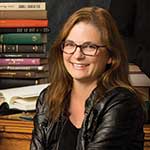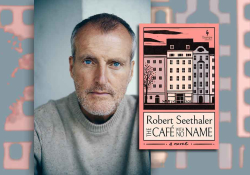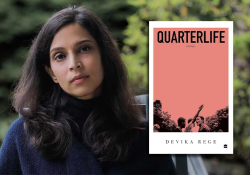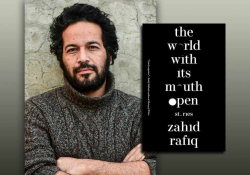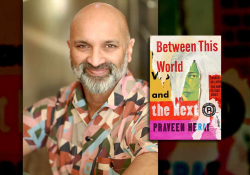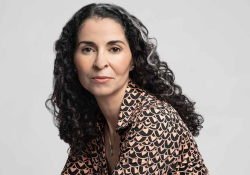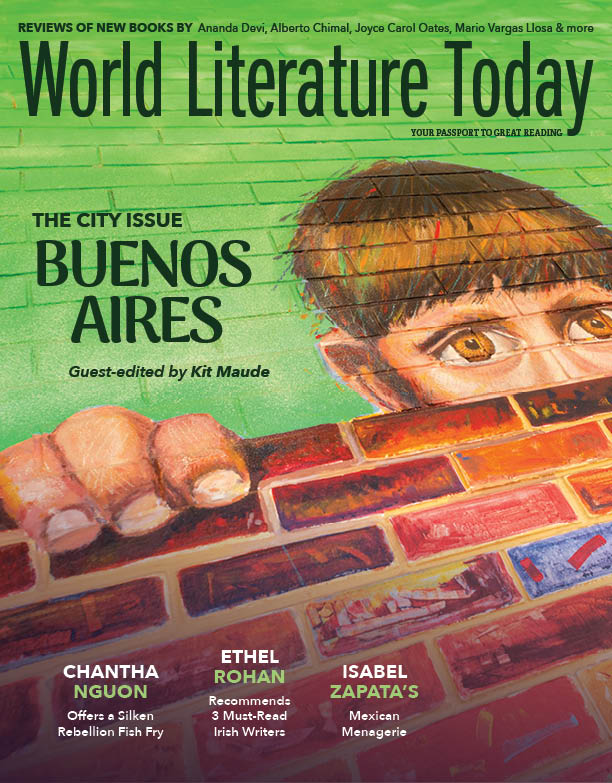7 Questions for Sébastien Delot
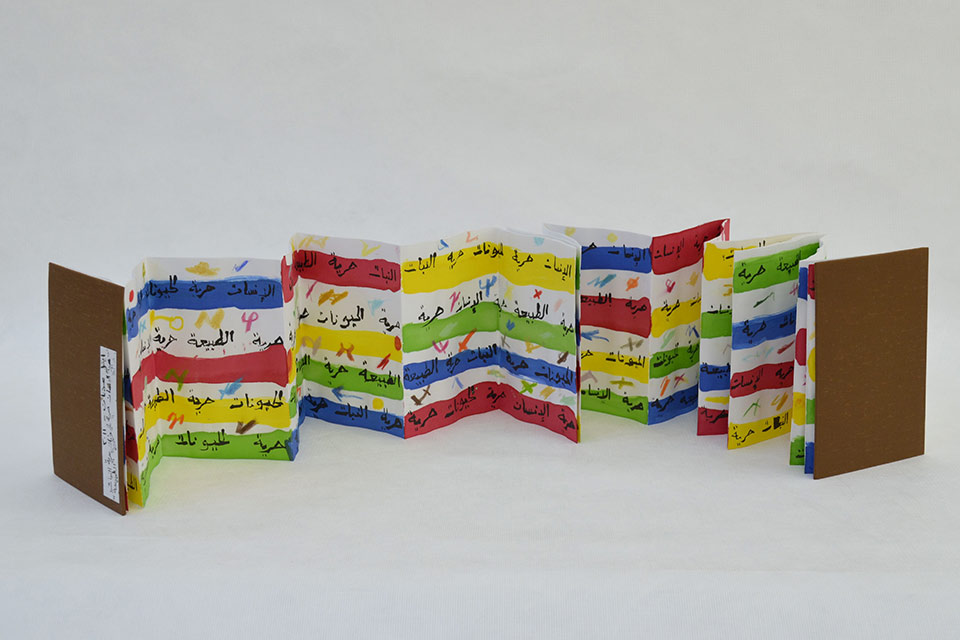
The exhibit Etel Adnan, Between East and West is ongoing at Ithra, a museum and cultural space in Saudi Arabia. This is the first retrospective exhibition in Saudi Arabia showcasing the works of Lebanese American poet, artist, and philosopher Etel Adnan, whose collection of stories Master of the Eclipse won the 2010 Arab American Book Award. Sébastien Delot curated the exhibit at Ithra.
Q
Our readers might think of Etel Adnan (1925–2021) first as a poet and writer. In our pages, Victoria Chang recommended Adnan’s poetry collection Time, and Monica Carter recommended her poetry collection Sea and Fog. Can you introduce her work as a visual artist?
A
Etel Adnan is a significant voice within the art historical canon. Although she became known initially for her literary work, her acclaim soon developed to become more focused on her visual creative output. However, Adnan was completely fascinated by this idea of fluidity between mediums, and her works all draw on her love of both the visual and the written arts.
She was particularly fascinated by a dream of unity through art, and how art could bridge different techniques and mediums but also perform a wider bridging function within society, to be within public spaces, to unite people around ideas. In a more practical sense, the exhibition gathers painting, ceramic, tapestry, and leporello works, creating a journey through Adnan’s agility as a visual artist.
Q
How did Ithra come to select Adnan’s work for exhibition at this particular moment?
A
Saudi Arabia is making significant strides forward and developing an ecosystem that nurtures creativity, unlocks the economic potential of the sector, and unleashes new and inspiring forms of expression. Ithra nurtures this cultural and artistic vibrancy across the region, creating an authentic legacy that encourages a new generation to recognize the transformative power of the arts and, through both national and international collaborations, foster greater understanding and cross-cultural connections.
This creative engagement aligned with Etel Adnan’s work and personal belief. As a citizen of the world with a deeply inquisitive mind, Adnan regarded art as a realm of revelation. Both in her life and work, she transcended borders, bridging generations, physical spaces, languages, and cultures.
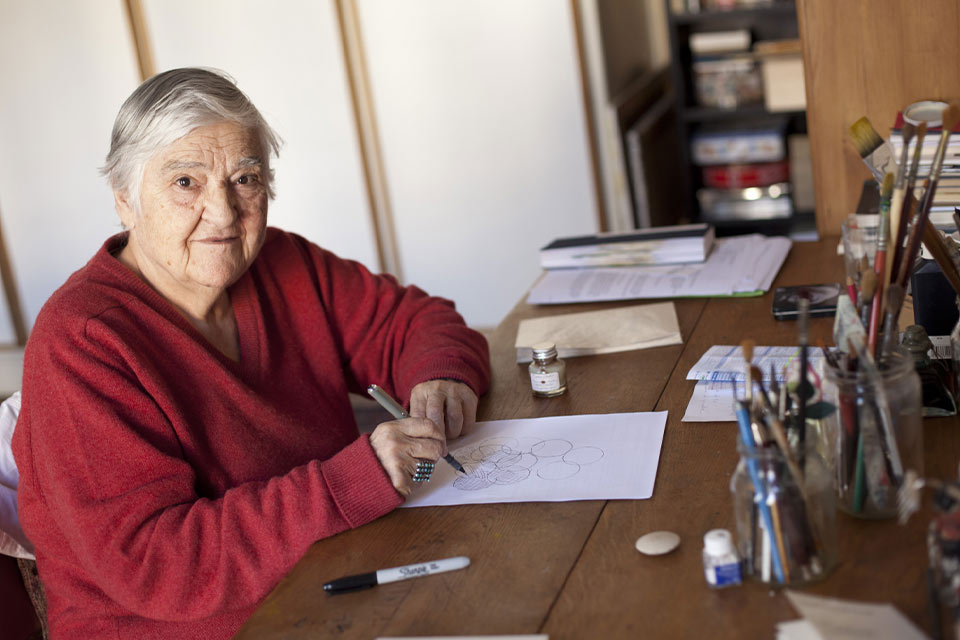
As a citizen of the world with a deeply inquisitive mind, Adnan regarded art as a realm of revelation.
In addition, with the exception of a 2014 exhibition in Qatar, Adnan’s work has predominantly been showcased in the Western world. Given her identity shaped by both Eastern and Western influences, and her creative focus on intertwining connections between the two, it is not only natural but also highly significant for her work to gain increased visibility in the Arab world.
Q
I understand that, at one point, she turned to visual art to free herself from writing in French. Can you tell us more about that?
A
Each language bears its own stigmas, barriers, and layered political, social, and cultural connotations, shaping and defining the inherent messages. At the time, the French language represented a colonial culture through linguistic assimilation. Adnan was deeply committed to finding a universal language that existed outside of such structures and legacies. In choosing to express herself through painting and visual art, she found mediums that transcended these linguistic complexities and fostered a global dialogue where her voice can resonate without limitations. She furthered this ideal by focusing on abstraction, which enabled her to use colors, movements, and forms to express her emotions, ideas, as well as to capture the natural beauty of her surroundings.
Q
In addition to oil and watercolor pieces and wool tapestries, Adnan creates leporellos, a form of accordion-folded artist books of Japanese origin. How do visual art and language intersect in these?
A
Adnan’s love of literature, and other areas like sociology, politics, and philosophy, are all reflected in her visual works. However, her leporellos are more than just a combination of written and visual art forms; they also question the origins of both of these languages. Inspired by the renewed fascination for prehistoric mural paintings in the 1920s and 1930s, Adnan became interested in this blended form of expression in which a sign could become a world, a drawing, or even a language. She used to say that “Ecrire c’est dessiner, dessiner c’est écrire”—writing is drawing, drawing is writing—and reflecting on this idea, the leporellos enabled her to explore and connect various forms of languages, including poetry, watercolor, calligraphy, drawings, in a single new and playful medium.
Q
The exhibit is a comprehensive display of forty-one of Adnan’s works spanning from the beginning of her artistic career in the late 1950s to her final creations before her death in 2021. When you step back and look at her work across more than sixty years, what do you see?
A
There is an overall coherence in Adnan’s oeuvre as multiple recurring themes playfully interconnect in her canvases, tapestries, leporellos, and poetry. She was consistently seeking to celebrate beauty in all its forms, including natural landscapes, urban surroundings, and even the cosmos. For example, in her circle series titled “Les poids du monde,” the very geometric paintings celebrate nature, not as a specific place but rather as an emotional landscape presenting her memories, intuitions, and inner feelings. This fascination with beauty in her work connects with her wider search for truth. By playing with colors and forms and declining their intensity and scale, Adnan reflected on how the concept of beauty can complement or hinder our understanding of truth.
Q
The exhibit also includes a screening of Motion, a montage of several Super 8 films Adnan made in Yosemite, New York, and San Francisco in the 1980s. What do these films reveal about Adnan and add to her artistic oeuvre?
A
Motion is an assemblage of silent short clips, ever-changing in time, space, action, and motion, completed in the 1980s in New York. Each clip serves as a poignant vignette, offering a glimpse into different chapters of Adnan’s life, capturing the essence of her creative journey and transformative moments. This visual diary associates places that were most influential to her, such as Mount Tamalpais and New York, with different times and seasons, enabling the viewer to reflect on the impact of light, color, and movement on our emotional perception of these places.
This film delves into Etel’s artistic evolution, marked by experimentation, mastery of techniques, and her nuanced exploration of the concepts of beauty and truth. However, it also visualizes her more personal moments, offering a new and unique insight into the artist’s ethos and inspirations.
Q
What do you find most compelling in Adnan’s work?
A
What I find most compelling in Adnan’s work is the seamless integration of writing and visual art. Adnan exists at the threshold of comprehension, offering a mysterious yet self-contained vision in her creations. Adnan asserts that painting holds memory, narrating and extending in such a way that each painting serves as an epiphany of sorts. By working through a wide color palette, she intertwined her mastery of art history with innovative techniques and forms. Her leporellos, for instance, reveal her ability to transform the well-known artist book into a new artwork resembling flowing rivers of paper tapestry.
Adnan asserts that painting holds memory, narrating and extending in such a way that each painting serves as an epiphany of sorts.
Shaped by a life marked by exile and war, she celebrates the beauty of the earth and humanity’s potential, advocating for peace, respect, and tolerance. Her profound understanding of history enables her to foresee potential futures, with poetry serving as a conduit for deeper understanding beyond mere words or logic. Adnan’s voice resonates as a bridge between cultures, particularly between the East and West, offering insights into the human condition and the power of empathy.
Sébastien Delot is the curator of the exhibit Etel Adnan, Between East and West (February 1–June 30, 2024) at the King Abdulaziz Center for World Culture (Ithra) in Saudi Arabia. Delot is the former director of LaM (Lille Métropole Musée d’art moderne, d’art contemporain et d’art brut).
